Understanding the Framework Shaping Autism Therapy
Autism therapy, particularly Applied Behavior Analysis (ABA), plays a critical role in supporting individuals with autism spectrum disorders (ASD). However, the provision, funding, and regulation of these services are deeply influenced by a complex web of laws and policies at federal and state levels. This article explores the current legal environment governing ABA therapy, highlighting key licensing standards, insurance mandates, Medicaid provisions, and court rulings that collectively shape access to autism therapy in the United States.
Defining Applied Behavior Analysis (ABA) Therapy and Its Benefits for Autism
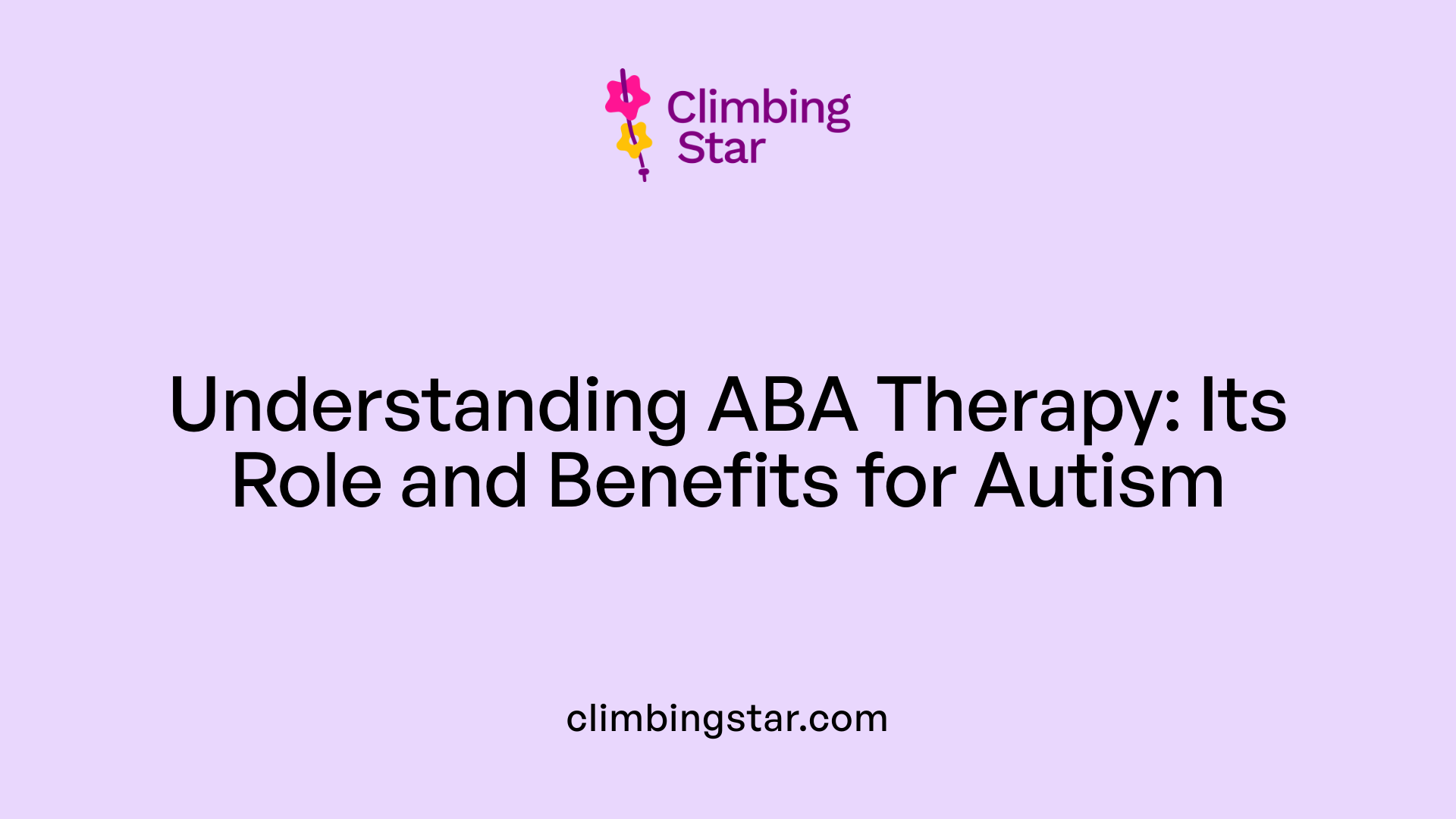
What is Applied Behavior Analysis (ABA) therapy and how does it help individuals with autism?
Applied Behavior Analysis (ABA) therapy is a science-based approach focused on understanding and modifying behavior by changing environmental factors. Defined by New York State law, ABA involves designing, implementing, and evaluating environmental modifications using behavioral stimuli and consequences to improve socially significant behavior.
Therapy goals
ABA therapy aims to increase helpful behaviors such as communication, social skills, and daily living tasks, while reducing harmful or interfering behaviors in individuals with autism spectrum disorder (ASD). Programs are personalized by qualified behavior analysts to set specific, measurable goals across various skill areas including self-care, social interaction, and academics.
Techniques used in ABA
Core techniques within ABA include positive reinforcement—which rewards desired behaviors to encourage their recurrence—prompting, and naturalistic teaching. Qualified professionals such as Board Certified Behavior Analysts (BCBAs) conduct ongoing assessments to adapt therapy to individual needs effectively.
Impact on individuals with autism
ABA therapy, supported by over two decades of research, has demonstrated significant improvements for children with autism. Early intensive intervention with ABA can lead to enhanced language development, better socialization, and greater independence. This therapy supports better quality of life and helps individuals participate more fully in community and educational environments.
ABA remains a flexible treatment model, delivered in various settings including homes, clinics, and community spaces, and is recognized as an evidence-based method by leading organizations such as the US Surgeon General and the American Psychological Association.
Professional Qualifications and Licensing for ABA Providers

Who Provides ABA Therapy and What Qualifications Do Professionals Need?
ABA therapy is delivered by a range of trained professionals, primarily including Licensed Behavior Analysts (LBAs), Certified Behavior Analyst Assistants (CBAAs), and Board Certified Behavior Analysts (BCBAs).
LBAs are licensed under state education laws such as in New York, where strict educational, examination, and experiential standards apply. These professionals must hold advanced degrees, typically at least a master's, in psychology or behavior analysis and pass licensing exams.
CBAAs assist LBAs and provide therapy under their close supervision. They must obtain certification from the state Department of Education, reflecting adequate training and competency to support ABA interventions.
BCBAs earn certification through the Behavior Analyst Certification Board (BACB), requiring a graduate degree, extensive supervised fieldwork (usually between 1,500 to 2,000 hours), and successful completion of a comprehensive exam. BCBAs design and oversee personalized ABA programs.
Certification and Licensure Requirements
Certification from the BACB is a recognized benchmark for professional qualifications across many states. Meanwhile, some states, including New York, mandate that behavior analysts be licensed through state regulatory bodies in addition to holding BACB certification.
This dual system ensures practitioners meet both national standards of competence and specific regional regulatory criteria, enhancing therapy quality and safety.
Roles, Settings, and Supervision
LBAs and BCBAs typically lead the assessment, program design, and clinical supervision of ABA therapy.
CBAAs provide hands-on therapy under the supervision of licensed behavior analysts, following structured supervision protocols. Documentation of supervision hours and activities is a required standard.
These professionals practice in diverse settings, including private practices, clinics, hospitals, community-based locations, and client homes, though some state Medicaid programs exclude certain settings, such as schools, from reimbursement.
Overall, licensing, certification, and clear role definitions ensure that ABA therapy providers maintain high standards of care tailored to the needs of individuals with autism and related disorders.
Regulatory Standards and Medicaid Coverage for ABA Therapy
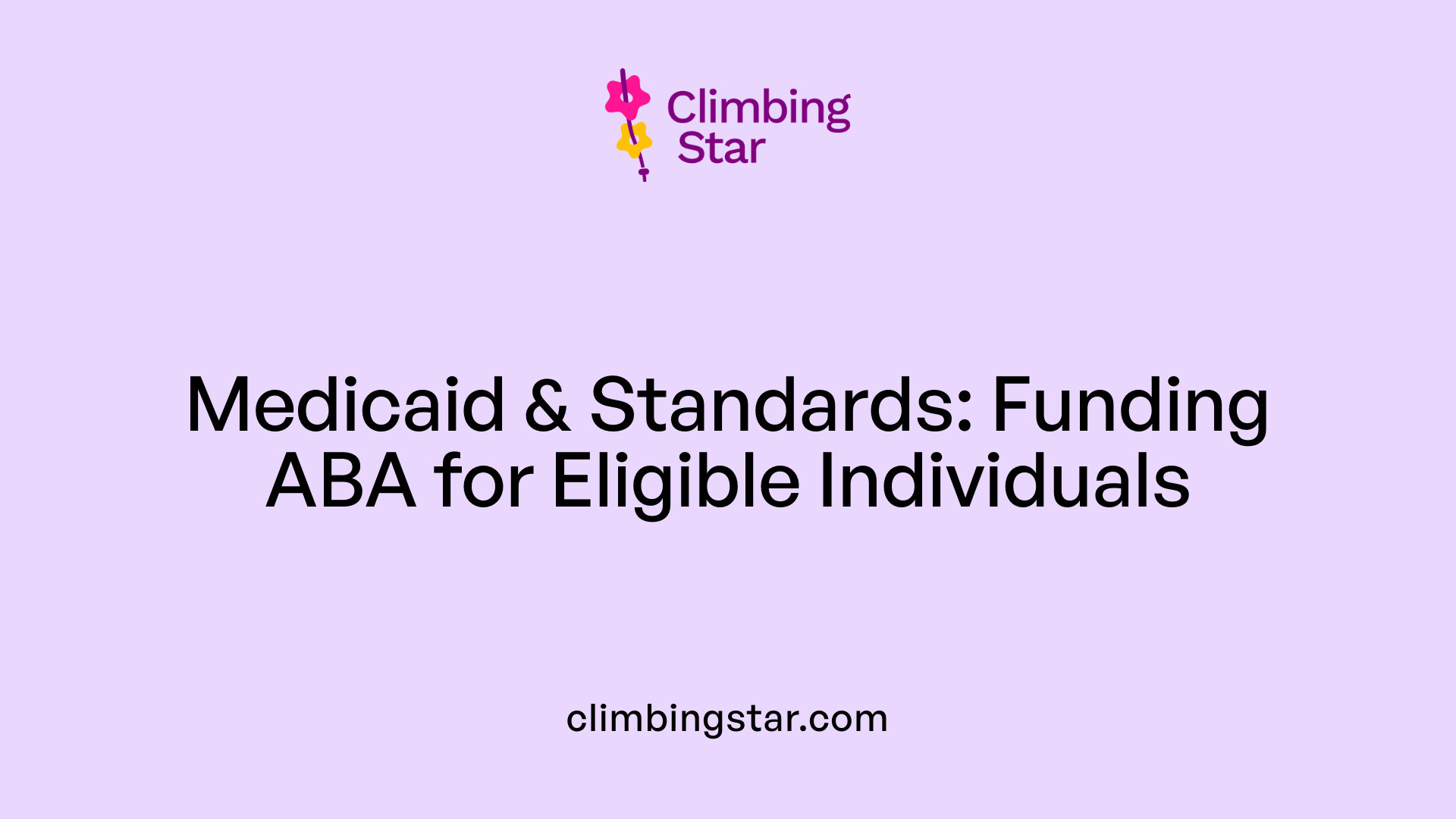
What are the Medicaid eligibility criteria for ABA therapy?
Medicaid covers Applied Behavior Analysis (ABA) services for individuals under 21 years of age diagnosed with Autism Spectrum Disorder (ASD) or related conditions such as Rett Syndrome. To qualify, the services must be delivered by licensed or certified professionals enrolled under Medicaid. These criteria ensure that support is directed towards young individuals with developmental needs, aligning with federal and state mandates.
Who are licensed behavior analysts and assistants?
Licensed Behavior Analysts (LBAs) are professionals licensed by the New York State Department of Education who meet stringent education, examination, and supervised experience requirements. Certified Behavior Analyst Assistants (CBAAs) are individuals certified to provide ABA therapy but must work under the direct supervision of an LBA. Both play essential roles in delivering ABA services across various settings including private practices and community environments, though Medicaid reimbursement does not extend to school-based services.
What supervision protocols are required for ABA providers?
Supervision of CBAAs by LBAs is mandated to ensure quality and adherence to treatment standards. The protocols include defined minimum supervision hours, specific supervision activities, and thorough documentation requirements. These guidelines maintain the integrity of ABA services, promoting effective, evidence-based interventions tailored to each client’s needs.
How does billing and reimbursement work under Medicaid for ABA services?
Medicaid payments for ABA are processed at rates established by the Department of Health and approved by the Division of the Budget. Providers must use designated procedure codes when billing, such as 97151 for assessment and treatment planning, and 97153 for adaptive behavior treatment. This structured billing system supports transparency and consistency in compensation for ABA service delivery.
Insurance Mandates and State Legislation Supporting Autism Therapy

What State Insurance Coverage Laws Mandate Autism Therapy?
Most U.S. states have enacted laws requiring insurance companies to cover the diagnosis and treatment of autism spectrum disorder (ASD), including Applied Behavior Analysis (ABA) therapy. These mandates ensure that behavioral health treatments for ASD, such as ABA, are accessible to those who need them. The goal is to reduce financial barriers and promote timely intervention for children and young individuals with autism.
How Do Coverage Limits and Benefit Caps Affect ABA Therapy?
Coverage limits for ABA therapy vary significantly between states. Some states impose annual maximum benefits ranging from $40,000 to $50,000, controlling overall insurance expenditures. However, these caps can affect the intensity and duration of services available to clients, making it important for families and providers to understand these limits when planning treatment.
What Are Equal Treatment Mandates in Autism Coverage?
Many statutes specifically prohibit insurers from limiting autism treatment benefits by visit counts or dollar caps that are less favorable compared to other medical conditions. This equal treatment mandate ensures that individuals with autism receive comparable insurance benefits, promoting fairness and preventing discrimination in health care coverage.
How Are Rehabilitative Services Incorporated Alongside ABA Therapy?
State insurance laws often extend coverage beyond behavioral interventions to include habilitative and rehabilitative therapies. These services may cover speech therapy, occupational therapy, and physical therapy, supporting comprehensive care models for individuals with autism. This integration allows for holistic treatment plans addressing various developmental needs alongside ABA therapy.
Legal Framework Influencing ABA Therapy Funding and School District Responsibilities
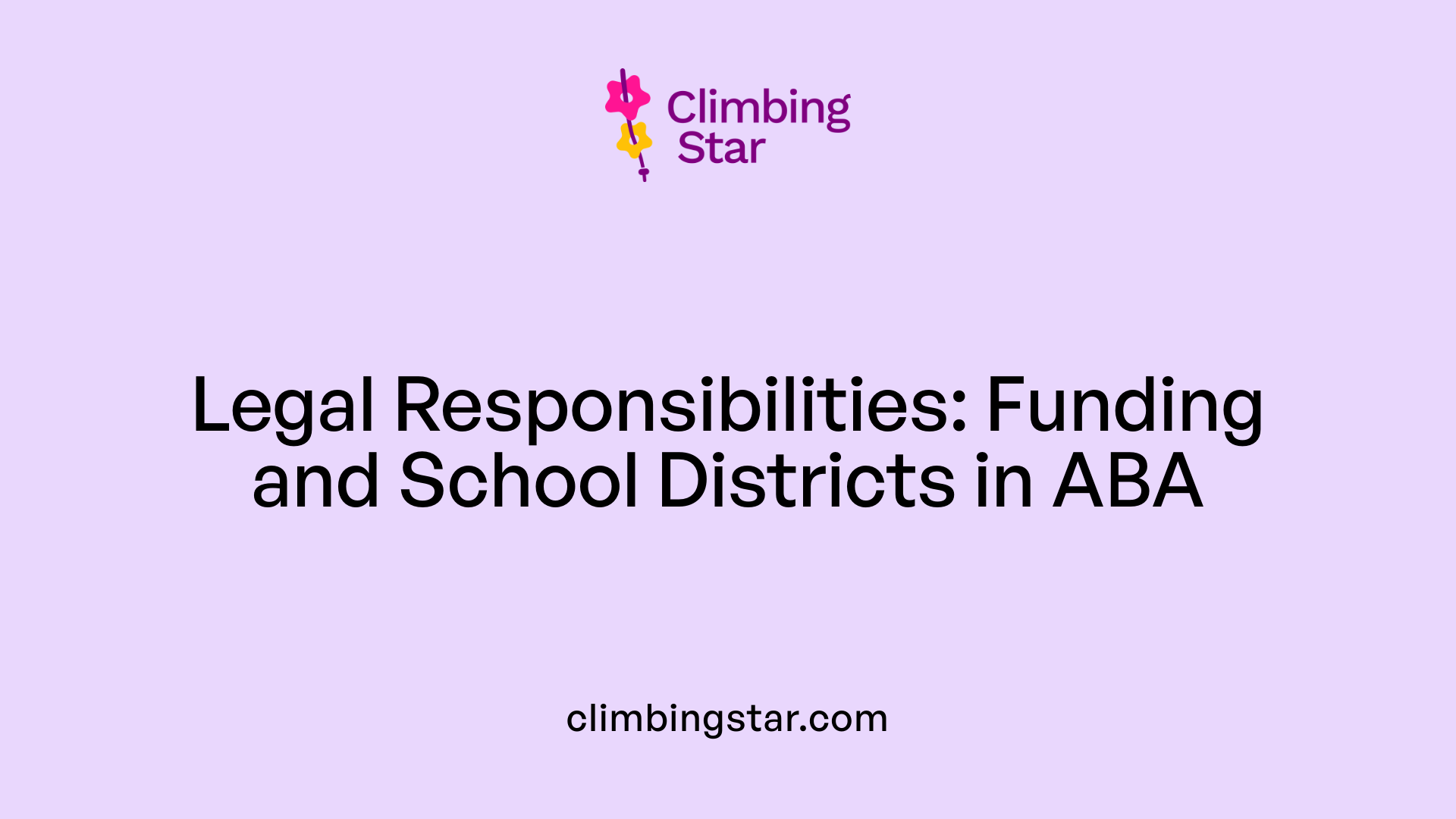
Court rulings on funding ABA services in schools
Multiple court decisions have established that school districts bear the responsibility for funding Applied Behavior Analysis (ABA) services for students. These rulings emphasize that ABA therapy is an essential educational service for children with autism spectrum disorder (ASD). Notably, federal district and appellate courts have reinforced that ABA-based programs must be provided and funded by school districts when included in a child's individualized education program (IEP).
A landmark case in this area is the U.S. Supreme Court decision in Florence County School District v. Carter (1993), which upheld the obligation of schools to fund ABA programs when public education does not adequately address a student's needs.
IDEA’s role in behavioral assessments
Federal legislation plays a critical role in shaping ABA therapy delivery within educational settings. The Individuals with Disabilities Education Act (IDEA), amended in 1994 and 2004, mandates that behavior assessments such as Functional Behavioral Assessments (FBAs) be conducted to inform the development of behavioral intervention plans.
IDEA ensures that children with disabilities receive tailored support, requiring that behavior plans based on these assessments guide effective interventions like ABA. This legal framework supports the integration of ABA as part of an educational strategy to improve student outcomes.
Federal support for ABA as medically necessary
ABA therapy is widely recognized by federal courts and legislation as medically necessary, not merely educational or experimental. Over half of U.S. states have enacted laws mandating insurance coverage for ABA, reinforcing its legitimacy and importance.
Acts such as the Caring for Military Kids with Autism Act (2011) explicitly mention ABA as medically necessary treatment. Courts have consistently rejected arguments that ABA is experimental or should not be covered by insurance, highlighting its efficacy as an evidence-based intervention for autism.
Together, these legal and legislative frameworks ensure that ABA services are properly funded and accessible to children with autism, both within educational systems and through Medicaid and private insurance coverage.
Core Techniques and Methodologies in ABA Therapy

What are the common techniques used in ABA therapy?
Applied Behavior Analysis (ABA) therapy employs several well-established techniques aiming to improve socially significant behavior. Among the most frequently used methods are discrete trial training (DTT), prompting and fading, and behavior chaining. These strategies break complex skills into smaller, manageable parts to help learners acquire new abilities step-by-step.
Positive reinforcement stands out as a central component, where desired behaviors are rewarded immediately to increase their future occurrence. This technique helps motivate individuals by encouraging helpful behaviors.
Other strategies include behavior contracts, extinction (reducing unwanted behaviors by withholding reinforcement), redirection, and various forms of modeling such as visual and video modeling that assist learners in understanding and imitating appropriate behaviors.
What role does positive reinforcement play?
Positive reinforcement is foundational in ABA therapy. When a learner demonstrates a target behavior, immediate rewards—such as praise, tokens, or treats—are used to reinforce that behavior. This increases the likelihood that the behavior will be repeated and helps learners gain new skills effectively.
How do discrete trial training and prompting contribute?
Discrete trial training (DTT) is a structured teaching technique that uses clear and concise instructions to teach specific skills. Each trial includes a prompt, a response, and a consequence, making learning predictable and focused.
Prompts are cues or assistance given to encourage the correct response. Over time, prompts are gradually faded to foster independence. These techniques provide systematic teaching tailored to the learner’s progress.
How are treatment plans personalized?
ABA therapy highly customizes interventions based on assessments by qualified behavior analysts (BCBAs). Personalized treatment plans define clear, measurable goals across areas like communication, social skills, self-care, and academics. This individualized approach ensures that therapy addresses each learner’s unique strengths and challenges, promoting meaningful behavior change and improving quality of life.
| Technique | Description | Purpose |
|---|---|---|
| Positive Reinforcement | Rewarding desired behavior immediately to encourage recurrence | Increase helpful behavior frequency |
| Discrete Trial Training (DTT) | Structured teaching using clear instructions and responses | Teach specific skills stepwise |
| Prompting and Fading | Providing assistance to elicit correct responses, then gradually removing it | Support learning independence |
| Behavior Chaining | Linking simple skills together to form complex behaviors | Build multi-step skills |
| Modeling | Demonstrating behavior visually or verbally | Help learners imitate behaviors |
These core methodologies combine science and compassion to effectively support individuals through behavioral improvements tailored to their needs.
Measuring ABA Therapy Effectiveness and Progress Monitoring
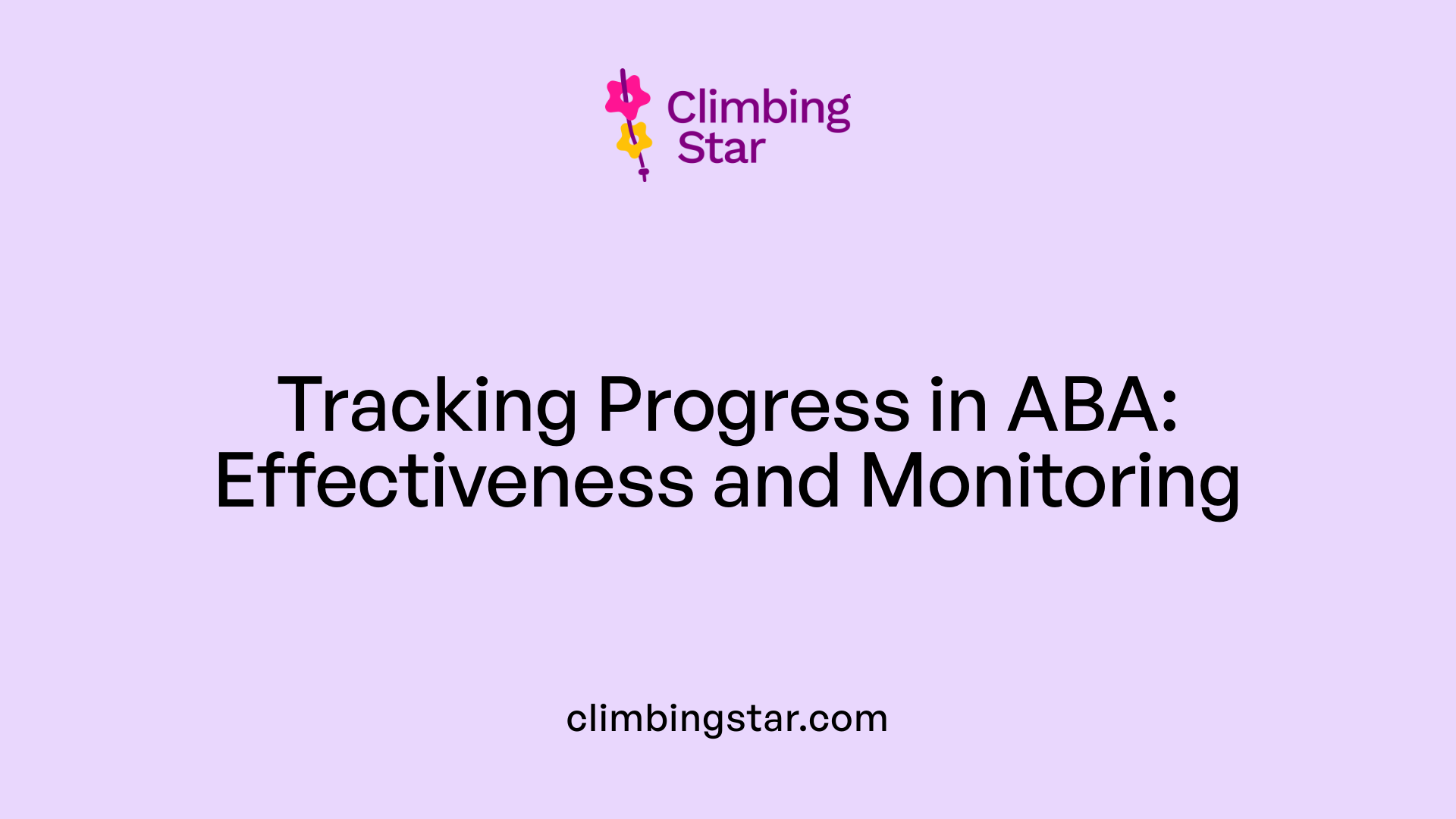
How is the effectiveness of ABA therapy measured?
The effectiveness of Applied Behavior Analysis (ABA) therapy is measured through a systematic process of data collection and analysis. Therapists collect detailed data on a child’s behaviors, focusing on measurable aspects such as frequency, duration, latency, and accuracy of targeted responses. This data is typically graphed and tracked over time to visually represent progress.
Data collection and analysis
Consistent and precise data collection allows therapists to monitor improvements in socially significant behaviors and skill acquisition. This ongoing analysis helps identify trends and informs decisions to adjust treatment plans as needed for optimal outcomes.
Standardized assessment tools
Standardized tools such as the Verbal Behavior Milestones Assessment and Placement Program (VB-MAPP) and the Assessment of Basic Language and Learning Skills – Revised (ABLLS-R) are commonly used. These instruments assess developmental milestones and guide the establishment of individualized, measurable goals across multiple domains, including communication, social, and academic skills.
Role of caregiver feedback
Caregiver input is a crucial component of progress monitoring. Parents and caregivers provide qualitative observations that give therapists additional insights into how behaviors generalize outside therapy sessions. Their feedback helps tailor interventions to the child’s daily environment and promotes collaboration in the therapy process.
Functional behavior assessments
Functional Behavior Assessments (FBAs) play a vital role by identifying the antecedents and consequences that influence challenging behaviors. By understanding these factors, behavior analysts can design targeted interventions that address the root causes rather than just symptoms.
Together, these methods form a comprehensive framework for evaluating therapy effectiveness, ensuring that ABA services remain responsive and individualized to each learner’s needs.
Addressing Criticisms and Ethical Considerations in ABA Therapy

What are the criticisms or limitations of ABA therapy?
Applied Behavior Analysis (ABA) therapy has faced several criticisms over the years. Historically, its early practices often centered on punishment and strict compliance, which some observers argue caused emotional distress for children undergoing treatment. This approach was seen as too rigid and potentially harmful to a child’s well-being.
Another concern is the intensity of ABA therapy. Programs may involve 20 to 40 hours of therapy each week, which can be exhausting and overwhelming for some children. This high demand has raised questions about the emotional and physical toll on young learners.
Critics also highlight issues related to individual identity. ABA has been accused of emphasizing conformity, with some practices focusing on suppressing or hiding autistic traits rather than celebrating individual differences. This can potentially impact a child's mental health and sense of self.
Furthermore, some argue that ABA's traditional standardized methods do not always adequately consider individual strengths, preferences, or unique differences, limiting its flexibility.
Modern approaches for ethical treatment
Today’s ABA has evolved considerably. Modern practitioners emphasize naturalistic and play-based techniques that respect and incorporate the child’s interests. Programs are personalized by qualified behavior analysts who set measurable goals tailored to each individual’s needs across communication, social skills, self-care, and academics.
Ethical ABA therapy now prioritizes positive reinforcement over punishment and includes ongoing supervision to ensure treatment aligns with ethical standards. Despite these advances, debates about long-term efficacy and ethical considerations continue, highlighting the importance of continued refinement and individualized care within ABA.
This evolution reflects an effort within the ABA community to address past criticisms while providing effective, respectful support for individuals with autism and related conditions.
Legal and Business Considerations for ABA Therapy Providers

Practice Establishment Requirements
Opening an ABA therapy practice involves numerous legal steps to ensure compliance and operational success. Providers must choose an appropriate business structure, such as a sole proprietorship, partnership, LLC, or corporation, which affects taxation and liability. Drafting detailed operating agreements and obtaining an Employer Identification Number (EIN) from the IRS are essential early steps. Additionally, creating thorough employment contracts protects both the practice and employees by clarifying roles and responsibilities.
Compliance with HIPAA and Other Healthcare Regulations
ABA therapy providers must adhere strictly to HIPAA regulations, which protect patient privacy and confidentiality. This includes maintaining secure records, controlling access to sensitive information, and training staff on privacy practices. Compliance also extends to state licensing standards and the regulatory requirements for licensed behavior analysts (LBAs) and certified behavior analyst assistants (CBAAs). Maintaining up-to-date certifications and following supervision protocols are mandatory to ensure legal operation.
Employment Contracts and Labor Laws
Employment agreements within ABA practices must address worker classification (employee vs. contractor), wages, work schedules, and benefits. Employers must comply with wage laws and anti-discrimination statutes, offering a safe and equitable workplace. Contracts should include clear dispute resolution procedures to manage potential conflicts efficiently. Proper classification influences payroll taxes and eligibility for benefits, crucial for legal compliance.
Client and Insurance Contracts
ABA providers must establish clear and comprehensive contracts with clients and insurance companies. These agreements should detail service expectations, billing procedures, and payment terms in compliance with Medicaid and private insurance policies. Providers need to ensure contract terms align with legal standards related to autism therapy coverage, including adherence to Medicaid billing codes and reimbursement rates. Transparent communication and documentation help avoid misunderstandings and legal disputes.
Overall, consulting with an experienced healthcare practice attorney is highly recommended to navigate complex corporate practice laws, licensing requirements, and safety regulations involved in ABA therapy practices. Proper legal and business preparation fosters a compliant, effective, and sustainable therapy service environment.
The Evolving Role of Federal and State Policies in Autism Therapy Access
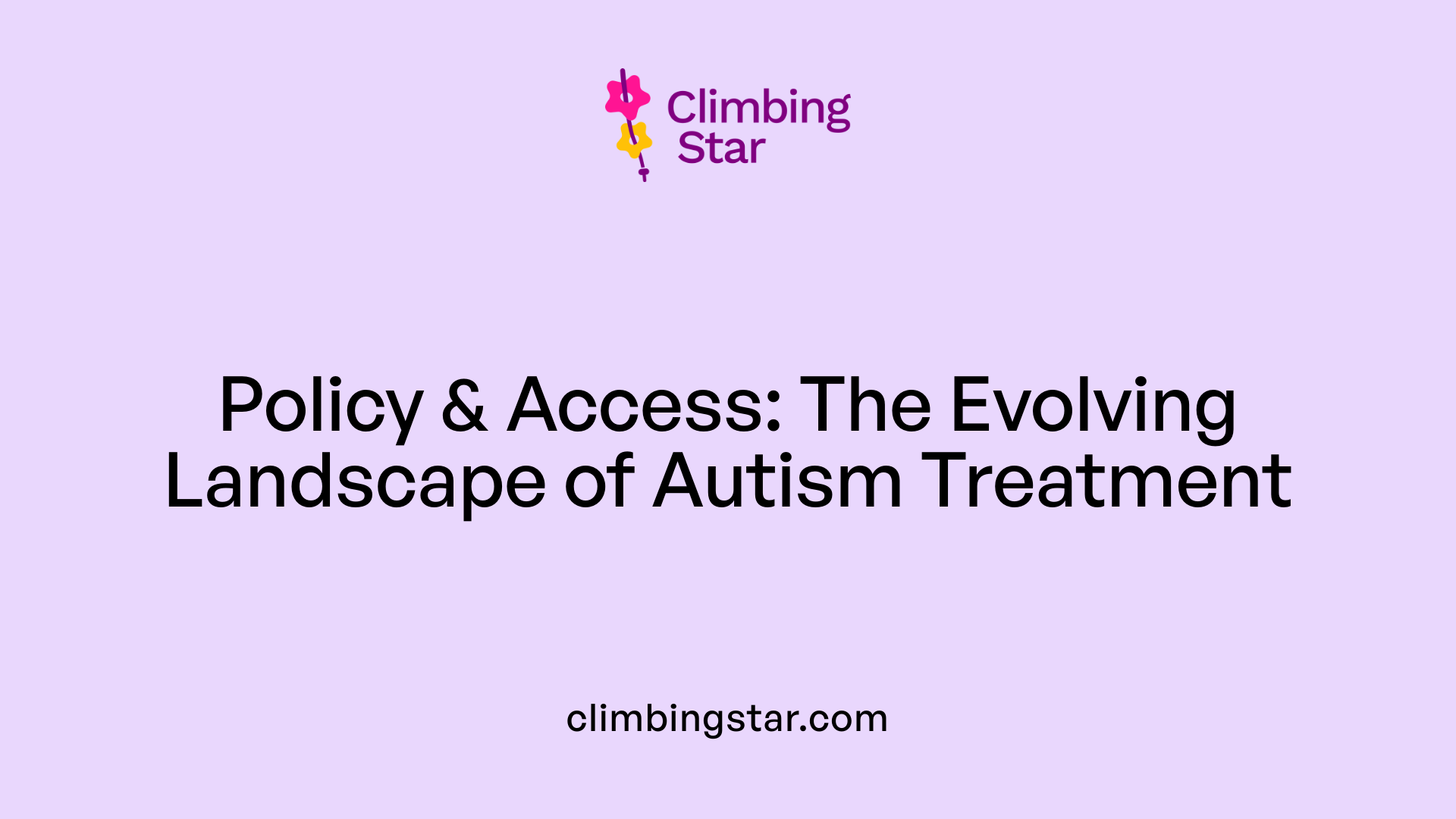
How does federal legislation recognize ABA therapy?
Federal laws explicitly recognize Applied Behavior Analysis (ABA) as medically necessary and integral to autism therapy. The Individuals with Disabilities Education Act (IDEA) mandates behavioral assessments, like Functional Behavioral Assessments (FBA), to inform intervention planning for children with disabilities. Landmark legal decisions—including the U.S. Supreme Court case Florence County School District v. Carter (1993)—have established school districts’ responsibility to fund ABA services. Additionally, the Caring for Military Kids with Autism Act (2011) recognizes ABA as a critical, medically necessary service beyond educational settings, reinforcing its legitimacy nationwide.
What are state mandates concerning insurance coverage of ABA?
Over half of U.S. states have enacted mandates requiring insurers to cover autism spectrum disorder (ASD) treatments, including ABA. Coverage often includes comprehensive behavioral health services with some states capping annual benefits between $40,000 to $50,000. Importantly, many statutes prohibit imposing less favorable visit limits or dollar caps on ABA than those applied to other medical treatments. Most state laws extend coverage to children and young adults up to ages 18 or 21, often requiring prescriptions from licensed physicians or psychologists and clearly outlined treatment plans.
How do Medicaid and military policies support ABA therapy access?
Medicaid programs in New York and other states cover ABA services for individuals under 21 diagnosed with ASD or related disorders, provided the therapy is delivered by licensed behavior analysts (LBAs) or certified assistants (CBAAs) under supervision. Payment rates for these services are established by state departments and budget authorities. For military families, federal legislation has formally recognized ABA therapy’s medical necessity, ensuring coverage across service member dependents.
What ongoing policy developments impact autism therapy access?
Federal and state policies continue evolving to expand and refine autism therapy coverage. Legal rulings have consistently upheld ABA’s evidence-based status, dismissing claims that it is experimental or not covered by insurance. States update regulations to align with medical and educational standards, and healthcare practices must navigate licensing, supervision, and reimbursement protocols accordingly. Consulting health law attorneys remains recommended to manage these complex requirements effectively.
| Policy Area | Key Highlights | Impact on ABA Therapy Access |
|---|---|---|
| Federal Legislation | IDEA, Supreme Court rulings, Military Acts | Mandates support, medical necessity acknowledgment |
| State Insurance Mandates | Coverage requirements, benefit caps, age limits | Broadened insurance reimbursement and service access |
| Medicaid Coverage | Licensed providers, supervision, established rates | Facilitates access for under-21 Medicaid recipients |
| Ongoing Legal and Regulatory | Licensing, provider qualifications, compliance | Ensures quality and sustainability of ABA services |
Looking Ahead: Policy Trends and Future Directions in Autism Therapy Access
As awareness and understanding of autism grow, so does the complexity of the legal and policy environment surrounding ABA therapy. Emerging legislation continues to expand insurance coverage, refine professional licensing, and clarify educational funding responsibilities, thereby enhancing access to essential services. At the same time, ethical considerations and the individualization of treatment approaches remain critical areas for ongoing dialogue. For families, providers, and policymakers alike, staying informed and engaged with evolving laws ensures that autism therapies remain accessible, effective, and respectful of the diverse needs of individuals with autism.
References
- Applied Behavior Analysis
- Summary Autism and Insurance Coverage State Laws
- Starting an Autism/ABA Therapy Practice: Key Legal ...
- National and State Legislation in Support of ABA-Based ...
- Applied Behavior Analysis Policy Manual
- Applied Behavior Analysis (ABA)
- The Controversy Around ABA
- Is ABA Therapy Harmful?
- Is ABA therapy harmful? The controversy explained







